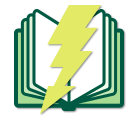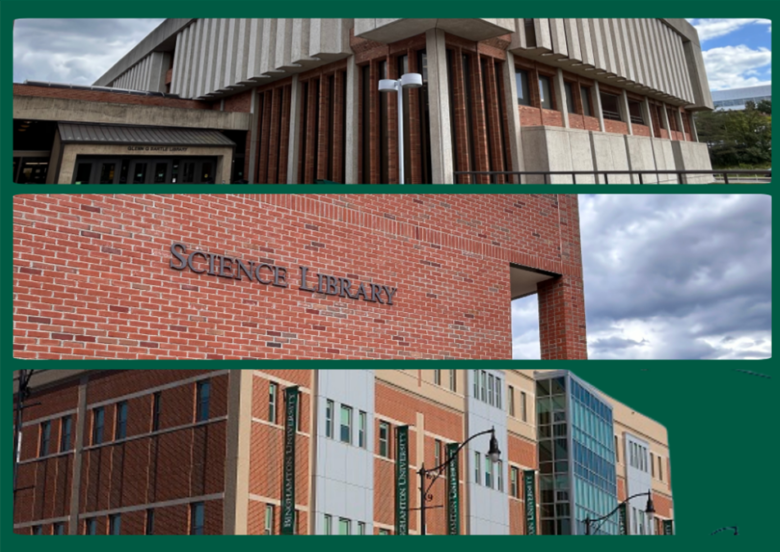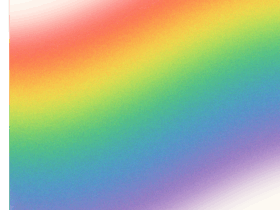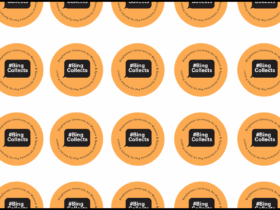Libraries Basics shares information and topics about the Binghamton University Libraries written by Alesha Khan ’28, Libraries’ communications student assistant.
Welcome back, Bearcats! To set you up for an amazing academic year, the Binghamton University Libraries has compiled a list of resources and services available at their three locations, which is accessible to you at all times during the year. To start off with the most important, most basic question of all: Where can I find the resources I need?
The Binghamton Libraries has three locations: Glenn G. Bartle, Science and University Downtown Center (UDC).
Glenn G. Bartle Library
The oldest of the Binghamton Libraries is Glenn G. Bartle Library, at almost 50 years old in 2025. At its creation in 1958, Bartle was known as the Harpur College Library and was opened to the public (along with the rest of the campus) in 1960. In 1972, it was renamed to Glenn G. Bartle Library, honoring Binghamton’s first and founding president, Glenn G. Bartle.
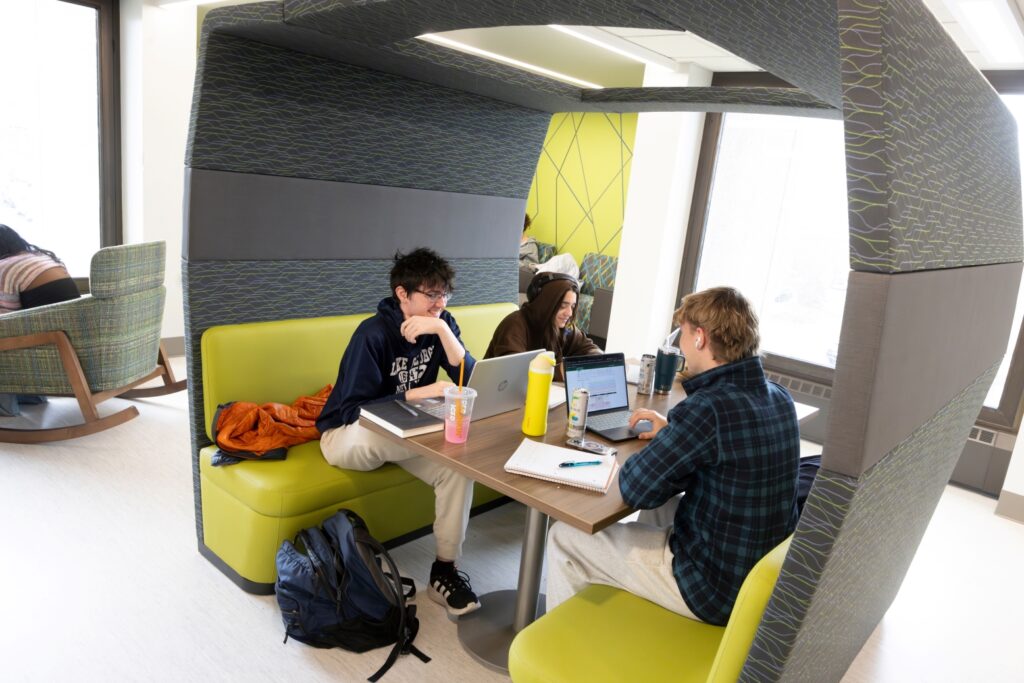
Shortened to Bartle for everyday use, this main library has four floors, all of which house incredible collections such as the Belle Margolis Holocaust Collection (2nd floor), Government Documents Collection (1st floor), the Oversize and Double Oversize Collections (2nd floor) and much more. It is also home to The Loft (2nd floor), where many favorite and/or trending fiction and non-fiction works can be found, and to the MakerLab (3rd floor), which houses 3D printers, wood engravers and 3D scanners.
For anyone wanting a quiet project space, whether it be open or reservable, Bartle offers countless options. There are three larger open spaces on the 2nd floor (South Study Lounge, North Reading Room, and The Loft) and many more scattered throughout. Reservable rooms’ capacities can range from anywhere between 1 to 10, and these rooms can be found on all four floors of the library.
Fun Fact: The Bartle Library building, located on main campus, is a huge building with a lot of offices and spaces in it, including the actual Bartle Library! To help you navigate it, the Innovation Lab and the Library Tower Cafe, for example, are located in Library North: the “building” part, not the actual library. Most of your classes at Bartle (especially the ones listed as LNG-###) will be in the “building,” not the library. The actual library is located in Library South. A good rule of thumb is that if it’s a library service or anything related to the library, then you will find it in the actual library part!
Science Library
Built in the 1970’s, the Science Library, located on the main Binghamton campus between the Science 1 and Science 2 buildings, is another location to explore the Libraries’ resources.
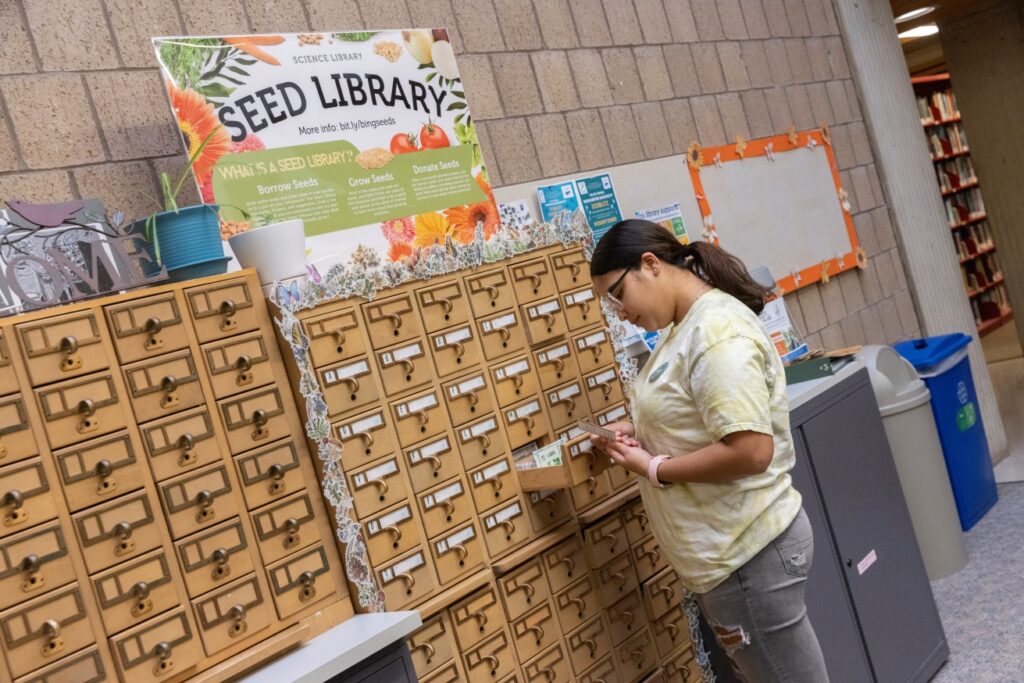
One of Science’s most prominent features is the Sustainability Hub, which has both a physical and a virtual space. The physical space can be found on the ground floor of the Science Library, and the virtual can be found at libraryguides.binghamton.edu/sustainability. The physical space includes the Climate Resilience Hub, a Terracycling Station, the Seed Library, and resources like Citizen Science Kits which can be borrowed.
The Science Library, similar to Bartle, will include a lot of project spaces as well, both open and reservable.
Fun Fact: The virtual Sustainability Hub space includes a variety of resources to gain further insight into sustainability, like lists of books and articles on sustainability and sustainable environments, upcoming events, tips on achieving a sustainable lifestyle and more.
University Downtown Center (UDC) Library
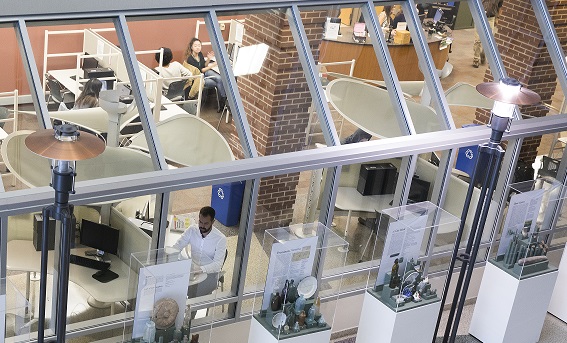
The smallest of the locations, the University Downtown Center (UDC) Library is a one-floor satellite location located at the University Downtown Center in downtown Binghamton. UDC is home to the College of Community and Public Affairs (CCPA), and their location in downtown Binghamton allows CCPA students to work directly with a variety of communities and organizations in the area.
The UDC Library includes impressive collections of historic materials on its shelves and a number of project spaces where students can work.
That marks the end of Basic Info – I will see you next time with What to Borrow. (Spoiler alert: it’s not just books!)
